
Lord Ganesh, also spelled as Ganesha, is an important Hindu deity who is revered as the Lord of thresholds and entrances, and is often placed above them or at temple gates to remove obstacles and grant blessings. He is the son of Shiva and Parvati and is recognized as the Lord of astrology and author of scriptures. Ganesh is commonly depicted with a red hue, a protruding belly, a broken tusk, and four arms carrying items such as a noose, an elephant goad, or a container of rice or his beloved sweet treats known as laddus. His love for laddus is renowned, and individuals often leave offerings of these sweets at his temple. Ganesh is known by various names, including Ganesh, Vinayaka, Vighneshvara, Gajanana, Gajadhipa, and Jyeshtha-raja. The primary texts dedicated to Ganesh include the Ganesh Purana, the Mudgala Purana, and the Ganapati Atharvashirsa, as well as the Brahma Purana and Brahmanda Purana. This article will cover six essential facts that one should know about Lord Ganesh.
#1 Why does Lord Ganesh have the head of an elephant ?
Lord Ganesh is recognized by his elephantine head, and his origin story is recounted in various Vedic texts. According to one popular version, Goddess Parvati created Ganesh out of turmeric paste, sculpting him into a loyal son. When Parvati instructed Ganesh to guard her bathing area, he dutifully prevented anyone from entering, including his father Shiva, who was returning home after a long absence. This led to a heated argument between father and son, with Ganesh losing the battle and having his head severed. Neither Shiva nor Ganesh were aware of each other’s identity. When Parvati discovered what had happened, she threatened to destroy the universe, prompting Shiva to promise to restore his son’s life by taking the head of the first creature he encountered, which happened to be an elephant.
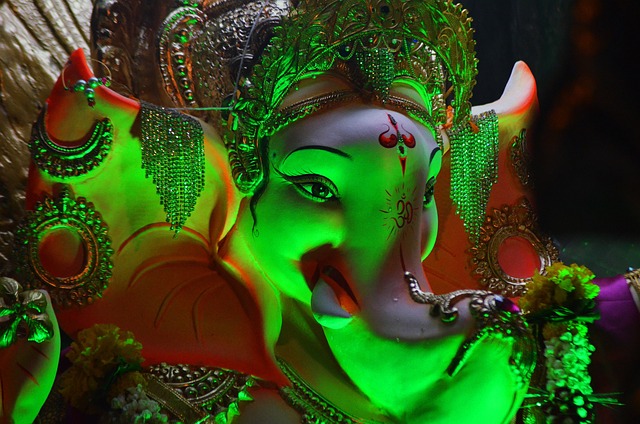
The symbolism of Ganesh’s elephant head represents the unity between the small and the large, with the elephant representing the goal of the universe and the man symbolizing its origin. This concept is reflected in the Sanskrit word “gaja”, which translates to elephant, where “ga” represents the goal and “ja” signifies the origin. Ganesh is thus considered the embodiment of human consciousness seeking to attain universal consciousness, with his elephant head serving as a reminder of the foundation of reality on which the universe rests. This is encapsulated in the Vedic phrase, “Thou art That,” or “tat tvam asi ” in Sanskrit.
#2 Ganesh is the Lord of Astrology and Remover of obstacles
According to Hindu texts, the universe is often likened to a cosmic machine with various Gods serving as administrators of this vast creation. Each deity represents or oversees a different aspect of life, shaping the destiny of each soul that inhabits this world.
Among the pantheon of Hindu Gods, Ganesh stands out as the remover of obstacles. This reputation has led many Hindus to worship him before embarking on any significant undertaking, whether it be a business venture, marriage, childbirth, or other major life events. Moreover, he is also revered as a guide on the spiritual path, helping to remove the barriers that hinder the soul’s journey to transcendence. As the lord of thresholds or entrances into new dimensions, Ganesh is also associated with guarding doorways. It is not uncommon to see an image of Ganesh above the doors of homes or public spaces in India, as his blessings are believed to ease the passage into new realms and protect those who enter. In Vedic temples, a statue of Ganesh is often the first deity encountered, with devotees praying to him for blessings and the removal of obstacles before engaging in worship or other spiritual practices.
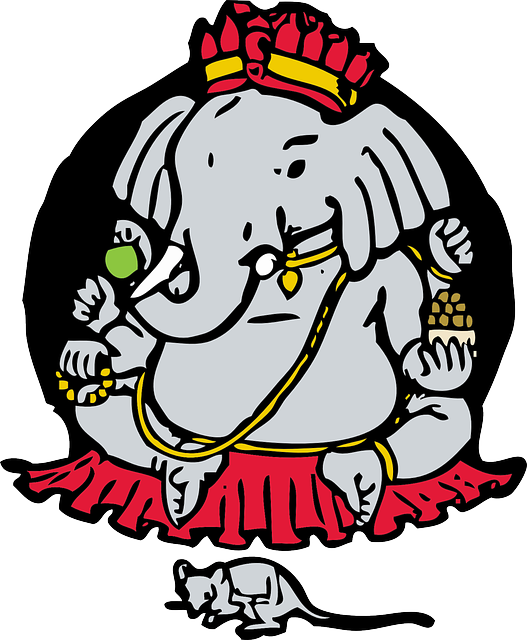
In addition to his role as an obstacle remover, Ganesh is also known as the guardian of esoteric knowledge possessing a deep understanding of the language of the stars and the destinies of all living beings.. As such, he is considered the presiding deity of astrology, with practitioners of Vedic science looking to him for guidance on how planetary influences affect the karma and destiny of each soul.
Ganesh is also referred to as Ganapati, which means “lord of the Ganas,” who are the attendants responsible for controlling the functions of the sense organs. According to Karapatri’s Sri Bhagavat-tattva, the term “gana” refers to a collection of things that can be counted or understood, making Ganapati the lord or ruler of categories.
The mantra “om gam ganapataye namaha,” which means “I offer my respects to Ganesha, the remover of obstacles,” is often chanted to seek Ganesha’s blessings. Additionally, Ganesh is commemorated every year on his birthday with a 10-day long festival known as Ganesh Chaturthi. During this festival, people engage in various traditional customs and rituals to honor and seek the blessings of Ganesh.
#3 Form and Sacred Symbols of Lord Ganesh
Ganesh, the revered deity, is a highly symbolic figure, depicted in ways that hold special meanings. The image of him with one tusk and four hands is a common representation, where two of his hands are holding a noose and a hook. The noose is a powerful symbol, representing the attachment that leads to anger and delusion. However, it is also used to catch delusion and free the individual from its harmful effects, pulling them towards the truth and tying them to the highest God. Meanwhile, the hook signifies Ganesh’s power, driving and motivating individuals towards their goal.
Additionally, Ganesh is sometimes depicted with an axe, which he uses to cut off the worldly attachments of his devotees, effectively ending their sorrow. The other two hands are raised in symbolic gestures, with one giving blessings and assurance of fearlessness while the other holds a rice ball, indicating the reward of spiritual practice.
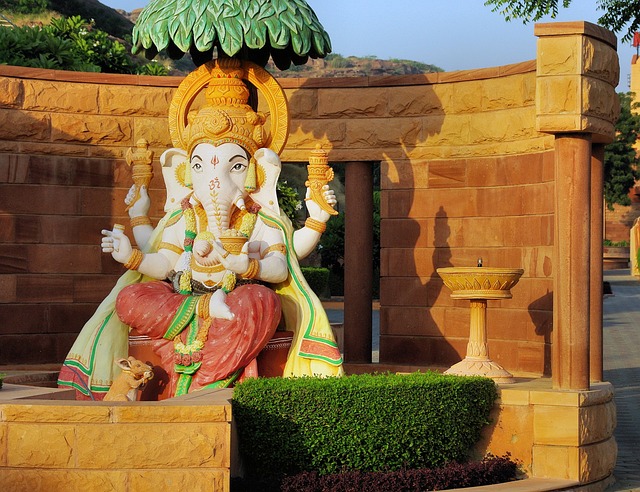
Ganesh’s large belly represents his influence by the material manifestation, while his large ears demonstrate his willingness to accept positive vibrations while discarding false and non-virtuous words. His flag, on which a mouse is often displayed, serves as a symbol of his carrier. The mouse represents the desire for material pleasures and the dangers of the ego. It is also a symbol of the active mind, which needs to be controlled to achieve spiritual perfection. The weight of an elephant, Ganesh, on the mouse represents controlling the mind and material desires.
Traditionally, Ganesh is adorned with red vermillion, which symbolizes the reddened complexion of someone deeply absorbed in work. As the lord of action, he is often depicted smeared with this vermillion and worshiped with red flowers. Known for his appetite for sweets, he is frequently offered and enjoys delicacies.
Local depictions of Ganesh vary, with the deity often appearing as individual images or bas reliefs carved from stone or boulders. His curved trunk, which can bend either to the left or right, represents the many ways one can overcome obstacles on the path to their goals. It is also a symbol for the Om mantra and is often seen holding a modaka, a sweet. Ganesh’s single tusk signifies the one truth, while the broken tusk reflects the imperfections of the ever-changing material world. One legend suggests that he lost the tusk during a battle with Parashurama, who he refused to allow to see Lord Shiva while he was sleeping. The resulting conflict caused Ganesh to lose one of his tusks.
#4 Ganesh derives all his powers from Lord Krishna
When Lord Brahma offered prayers to Lord Krishna, he revealed the source of Ganesh’s powers in the revered Brahma Samhita. Within his prayers, Lord Brahma bestowed the following revelation :
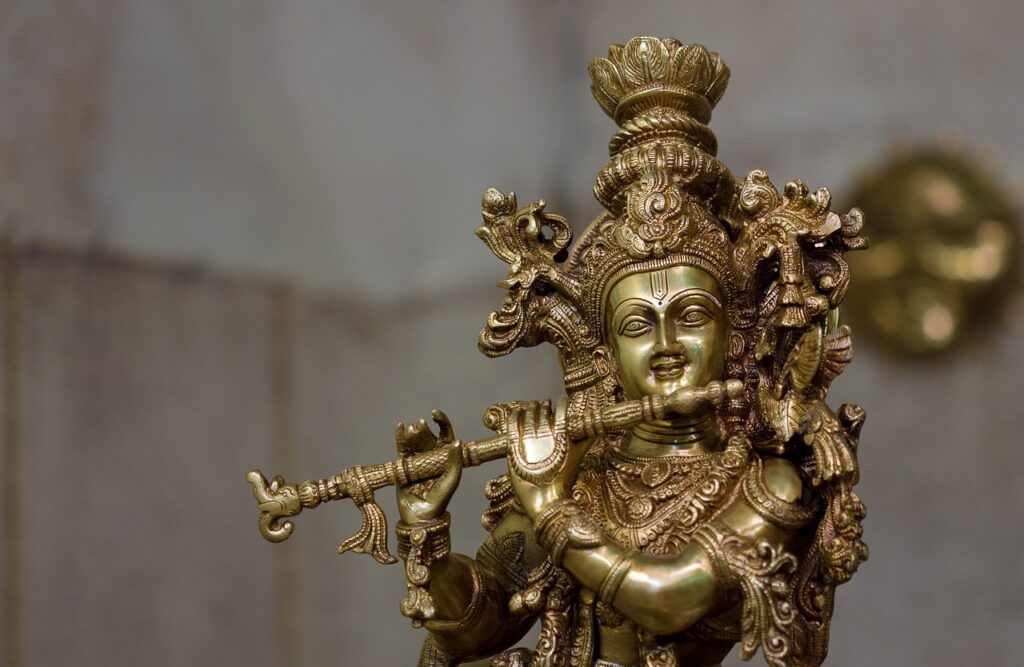
yat pada pallava yugam vinidhaya kumbha
dvandve pranama samayesa ganadhirajaha
vighnan vihantum alam asya jagat trayasya
govindam adi purusham tam aham bhajami
(Brahma Samhita)
–
I worship Lord Govinda, the ancient deity whose lotus feet are constantly grasped by Ganesh with the two protuberances on his elephant head, in order to obtain power to remove all the hindrances that obstruct the path of progress within the three worlds.
#5 Ganesh Transcribed Mahabharata
The account of how Ganesh wrote the Mahabharata, based on the dictation of Srila Vyasadeva, is a fascinating tale. After the Kaurava and Pandava clans, as well as Lord Krishna, had passed away, Vyasadeva entered into a deep state of meditation. In this state, the great story of events that occurred between the tribes, including the Kurukshetra war, was still fresh in his mind, and he longed to pen it in the form of an epic poem. Seeking advice on a suitable scribe to write his dictation, he consulted with Brahma, who recommended Ganesh.
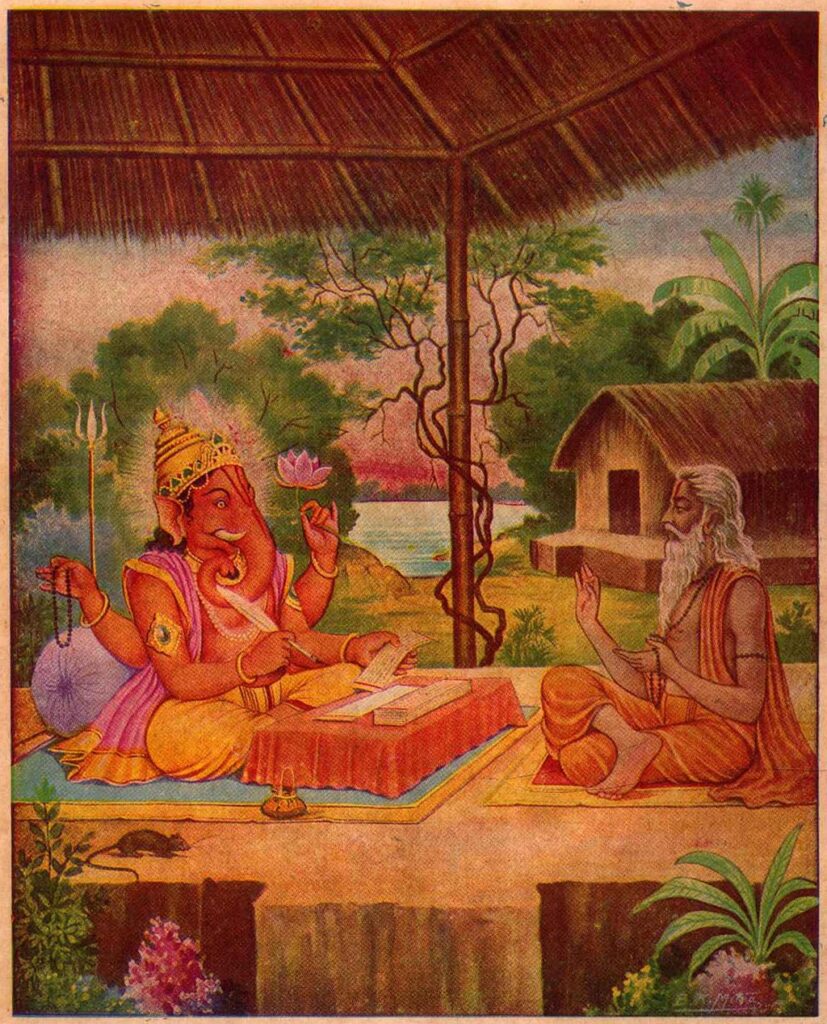
When Vyasadeva thought of Ganesh, the elephant-headed deity appeared before him. However, Ganesh was hesitant about taking on the task, and so he made a condition: he would not put down his pen until the entire epic had been completed. Vyasadeva countered with his own requirement that Ganesh fully understand the meaning of each section before writing it down. Ganesh agreed to this, understanding that it would enable him to plumb the depths of the story’s meaning and present it in a way that would be accessible to all humanity.
Thus, the two began their collaboration. Whenever Vyasadeva needed a break from narrating, he would offer up a particularly complex clause that would require Ganesh to pause and fully comprehend its meaning. Ganesh, in turn, would use his broken tusk as a pen to transcribe the tale. This unique writing instrument is a symbol of Ganesh’s devotion and dedication to the task, despite any obstacles that may have arisen.
#6 Ganesh is known for his intelligence and wisdom
According to the legend, there was a competition between Ganesh and his brother Kartikeya to see who could circle the earth first. While Kartikeya rushed off on his peacock to start the race, Ganesh had a different idea. He decided to circumambulate his parents, Lord Shiva and Parvati, who are revered as the nucleus of the universe. It was a gesture of devotion and respect towards them. When asked about who had won the race, Lord Shiva declared Ganesh as the winner, as he had recognized the importance of his parents.